Episode 6: Clare Sefton & Steve Parker – South Lancs Bat Group

*Photo courtesy of Andy Harmer

Episode 6: Clare Sefton & Steve Parker – South Lancs Bat Group

*Photo courtesy of Andy Harmer
Episode 5: Andy Harmer & Roy Leigh – Cheshire Mustelidae
I met up with Andy & Roy at Andy’s girlfriends house back in November 2019. We talked about their careers in ecology as well as their extensive extracurricular ecological exploits including Andy and Rachel Hacking’s now legendary Cheshire Active Naturalists (CAN) group. But the main thing I wanted to talk to them about was their current project, Cheshire Mustelidae: Coordinating the recording of mustelids in Cheshire, and sharing sightings, photos etc.
They say trying to see a stoat or weasel is like going out to find a rainbow, virtually impossible. So this project means cunning, stealth and ingenuity. To find the stoat you must become the stoat! So how do they do it?
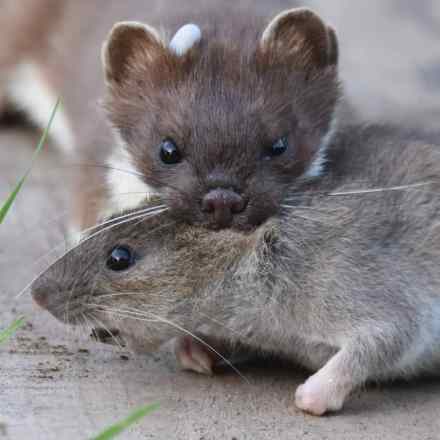 *Photo courtesy of Paul Quigley (@iggyquiggy)
*Photo courtesy of Paul Quigley (@iggyquiggy)
Episode 4: Rachel Giles, Evidence and Planning Manager – Cheshire Wildlife Trust

Episode 3: Rachel Webster, curator of botany at Manchester Museum
I met up with Rachel in the Museum’s herbarium, way up in the roof of the neo-gothic, Hogwartian land mark of the Manchester Uni campus back in May 2019.
We talked about the collection and the people who contributed to it as well as Rachel’s role, her predecessors and other interesting characters from the herbarium, museum and science in general’s history.
Whether or not you think you’re into botany, I think you’ll like this one. And the corridor of boxes of plant specimens we recorded the interview in had surprisingly good acoustics!
Thanks so much to Rachel for her time. It isn’t the first time she’s walked me through the herbarium’s history and now I’ll be trying come up with a new project to give me an excuse to go back.
It’s such an interesting place. From the specimens to some of the old bespoke furniture they’re stored in, to the winding stair case that leads you up to the rafters of the museum to see it all, to the stories of the many people who’ve passed through it over the years, it’s like peaking behind the scenes at of the museum.
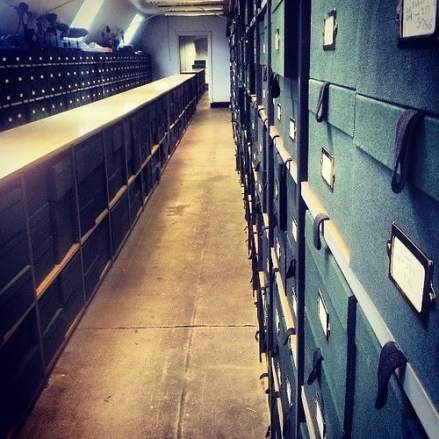
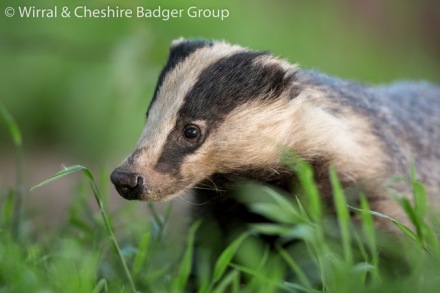
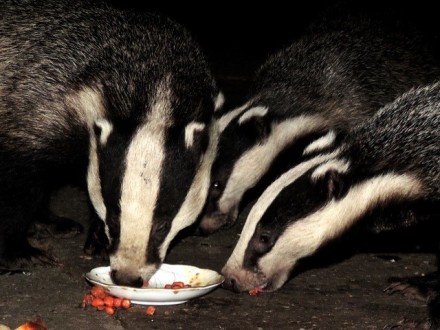
Thanks to the badger group for these photos.
Long time no blog 🙂
I’ve made a podcast called ‘Ecology – Tales from the Field’. You can find it on the usual podcast apps and directories. Basically it’s me and my mate Fleur chatting to interesting people in the field of ecology and conservation. If you’re ‘into nature’ you should check it out. I think there’s something in this first series for everyone.
Episode 1 is out now. I’ll be adding a new episode every week for the next 6 weeks…
Epidode 1: Noell Leather, Volunteer Reserve Manager at Lancashire Wildlife Trust’s Summerseat Nature Reserve.
Fleur and I met up with Noell who took on the management of Summerseat Nature Reserve over 40 years ago. The conversation covers what the Wildlife Trust was like back then and the joys and challenges of having your own nature reserve to manage.
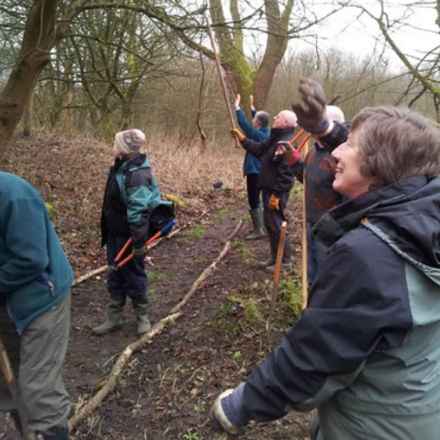
This year we’ve been keeping a record in the office of all the different things we encounter while on the job. There are are lists for birds, plants, mammals, herptiles, moths & butterflies, and poo. Something can only be entered on the list once, there are no winners (because if there were, Simon would thrash everyone and it’d be no fun), we just want to see how much we see in a year between the 10ish of us.
It has the pleasant effect of turning every job, even the potentially dull ones, into a potential new find. Today I paid a visit to a waste water treatment works we surveyed for great crested newts last year which still has some fencing in place, to inspect the fence and check it was still a functional barrier. The filter beds with their revolving sprinklers attract birds in large numbers, who feed off the insects which the beds attract. Each round circular bed has a ring of wires leading from a central pole to the rim. Today the wires were bedecked in carrion crows giving them the appearance of macabre big-tops. Pied wagtails ran around on the stones below them. Some old, now defunct, beds have long overgrown with bramble scrub. A tree sparrow observed and chastised me from above as I walked past, and I caught a glimpse of a rabbit’s bottom disappearing into the thicket.
When I reached the fence line I started my perimeter walk and out of habit rather than necessity I turned over some of the left over carpet tiles, remnants of the bucket traps and carpet tile trapping surveys of last summer. Earth worm heads flinched back down their holes and centipedes flowed over and under stones or clods of earth. The contracted bodies of many slugs clung to the underside of the tiles but there was little else under the mats yet. The myriad of beetles were still absent.
Under an old plastic panel lying on the ground I watched a field vole zoom through its exposed labyrinth of tunnels in the damp, yellow grass. Then, under a tile I found two frogs and toad. All three appeared still to be in a torpid state and I gently placed the mat back down. I returned to the mat a few minutes later having considered it and decided to move them. Ordinarily I wouldn’t disturb animals in this state but as they were on the wrong side of the fence it wasn’t right to leave them there. So I fetched an empty bucket, lined it with vegetation and placed them in.
I have a fondness for all wildlife, but I love toads. I genuinely love them, they illicit an emotional response in me that other animals don’t. When I look at a toad I get the feeling you get when you run into a really good friend. I can’t help but anthropomorphize them they just have such wonderful faces. This was my first toad of the year and my day was instantly made by finding it and I handled her with the usual care, plus a little extra due to her docile (even by a toad’s standards), dozy condition.
I don’t anthropomorphize frogs. They exude wildness. Reflexive, instinct driven, dynamic and slightly repellent in their curiousness. If you pick up a frog they throw in everything they have to kick, leap and headbutt their way out of your hands. These two took only a moment to come to life and become alert and escape driven.
I placed them in the hibernacular, constructed for surveys last year and carried on, finding no more. Towards the end of my walk a buzzard dropped from a nearby tree, in that heavy fall then suddenly weightless swoop of theirs. Jackdaws yapped their disapproval and song thrush and blackbirds went about their business along the field margin. I wondered if I’d seen a raven, sat up a tree on the other side of the site, but it was just another crow. I scanned along the tree line through my binoculars and was rewarded with the sight of a male kestrel, glowing almost pink in the afternoon sun. I followed him as he flew from his tree, over the field I stood in and hung in the sky, treading air above me for a half a minute before going on its way.
Frog, toad and field vole all firsts for the work list. Not bad for an hour’s fence check.
More on vegetative plant identification. A useful stumbling block…
Attempt #3. Great Willowherb.
Keying out a dandelion and petty spurge using The Vegetative Key to the British Flora been reassuringly straight forward. I was feeling confident (cocky), so when I saw this growing in a wet ditch while out on a job I thought I’d have a bash at it…
That picture doesn’t show it very well but it was growing out of a water body. I had it in my mind that it was therefore going to be an aquatic plant. I don’t know my aquatic macrophytes very well so for all I knew it could be a young bog bean, marsh marigold etc.
The key took me through the following features (my descriptions below are not always direct quotes from the key):
Here is where I knew I’d gone wrong. I spent some time trying to convince myself that that the leaves could be described as lanceolate to ovate but they just aren’t! They are obovate if anything. I was seduced by the weakly toothed bit making it hard to let it go. You brain likes to latch on to a bit that works in a plant description making you blind to all the other bits that don’t.
So there’s lesson one: Don’t ignore the descriptive elements you don’t like. If it’s wrong it’s wrong.
Next it all kinda fell apart as these things sometimes do when you get stuck. I misread an early line of text and convinced myself I should have answered yes to:
Lesson two: Always read the key carefully and make sure you’ve understood it before moving on.
I started again and after a while trying and failing I admitted defeat and asked Miranda what it was. She took one look at it and said: “It’s great willowherb”. My heart sank. Oh yeah, I thought. “But it was growing in water” I said. “Yeah it often does” she said. “Oh”. I set about reverse engineering the key so I could see the route I should have taken.
It seemed to me that I would have needed a stem to use The Vegetative Key. I had another go using a young willowherb growing in my garden and again became stuck without a stem…
I consulted my favorite social media resources to check I was right. The BSBI on Twitter, and the ever obliging folk of Facebook’s Wild Flowers of Britain and Ireland group confirmed my suspicions. I asked Sarah whether she had any advice on getting further than ‘willowherb sp’ with plants this size. Her advice was: “I’d walk on by…willow herbs are a really tough group, they also hybridise, and doing them vegetatively is tough enough without doing rosettes.”
Lesson three: You need a stem to identify willowherbs using The Vegetative Key.
The next day I was working in North Wales. I’d been rummaging around in some woods and was on my way back to the van, parked in a lay-by on a country road. I looked into the roadside ditch as I walked along and saw lots of young great willowherb (Epilobium palustre) growing there…
Lesson four: Mistakes and failures can be every bit as useful as simple successes.
It took more than the key on its own to get there but knowing a species at every stage of it growth is so useful.
Thanks for reading. I hope you’ve found it useful or at least reassuring. Onward and upwards! More to follow…
Continuing getting to grips with vegetative plant identification.
Attempt #2. Petty Spurge.
Buoyed on by my success with the dandelion in my previous blog I ventured once again into my back yard with the aim of attempting to use The Vegetative Key to the British Flora to identify the first plant I saw. This meant ignoring 3 more dandelions for the sake of variety but in just a few steps I came across this unassuming little thing…
I thought it might be petty spurge when I saw it. I don’t know spurges very well but I vaguely remember someone telling me once that a plant that looks a bit like this was petty spurge so I had an idea what it might be. Less confident than the dandelion which seemed appropriate for my next attempt.
The key took me through the following features (my descriptions below are not always direct quotes from the key):
As you can see the latex is obvious (please excuse the close up of my thumb nail. I googled what ridges mean on finger nails and apparently it’s a sign of age. I am in my mid thirties which apparently is the age you start getting all gnarley).
ruderalˈruːd(ə)r(ə)l/BOTANYadjective
While I bristle slightly at this apparent slur on my back yard I accept it’s a green ruderal.
And I was encouraged to see a pleasingly vertical, tap root.
This is easy, I thought. And I was of course quickly proved wrong. My next attempt was frustrating but useful. Blog to follow…
Thanks for reading. If you disagree with my IDs or have thoughts on the subject please comment. All feedback welcome.
Getting to grips with vegetative plant identification.
This is The Vegetative Key to the British Flora by John Poland & Eric Clement:
It’s a magic book that gives you the power to identify British plants in their vegetative state (no flowers) but leaves some of us mysteriously reluctant to use it.
I first heard of the book while doing a course in 2012. I was still getting my head around floral keys generally and the idea of vegetative ID was new to me. Someone asked Ros Bennett to recommend a vegetative key and she recommended Poland. She said it was good and that John Poland was younger than you’d imagine.
I went away and bought it with my usual good intentions, but as time went on and I began to gain a better understanding about how hard identifying plants with flowers was, the idea of attempting to ID them without got shelved along with bryophytes, diptera, Spanish and the ukulele.
Thing is, I knew it wasn’t going to be as hard as those. I had my copy with me when I attended an MMU day course in Shrewsbury, and Mark Duffel talked me through IDing something with it. The key is ever so slightly different to the usual dichotomous floras. It’s polychotomous with sometimes several options to choose from rather than the usual two. Mark drew a few lines in pencil on the opening key to major divisions and I got it…
The polychotomous thing really isn’t a big deal but it can be enough to put you off trying when you aren’t confident. So now I understood how it worked but I continued to procrastinate over veg ID. Four years after purchasing the key it still looked annoyingly new.
Well now I’ve given myself a project to do. As mentioned in my last couple of blogs I’m having a crack at producing a complete flora of the walls, gutters and random green places of Gorse Hill, where I live. Vegetative ID will be really useful to the project so I’m pulling my finger out and finally doing what I should have done all along and just use it so it.
I’m going to talk you though my practice attempts, where I went wrong, what I figured out etc, in the hope that it illustrates how good this key is and encourages a few people like me to get their copy out and have a go too.
Attempt #1. Dandelion.
I went into my back yard with the intention of IDing the first thing I saw. It’s a dandelion I thought. Let’s find out…
The key took me through the following features (my descriptions below are not always direct quotes from the key):
A good start. It didn’t take long. Next step will be to try something less familiar. Update to follow…